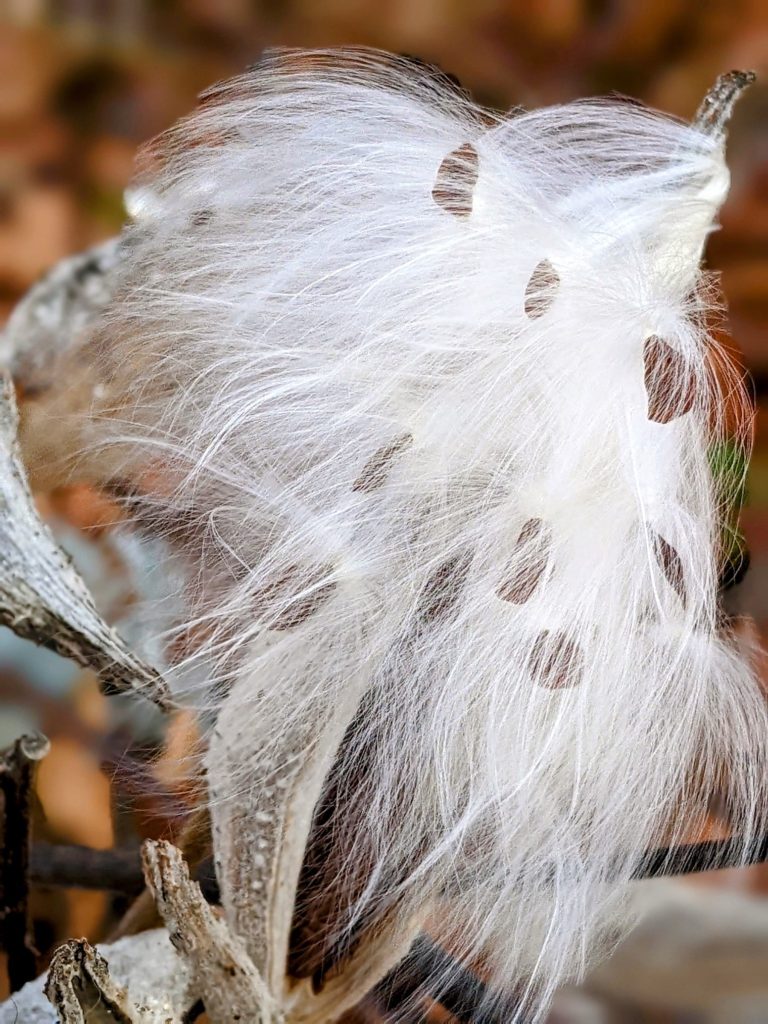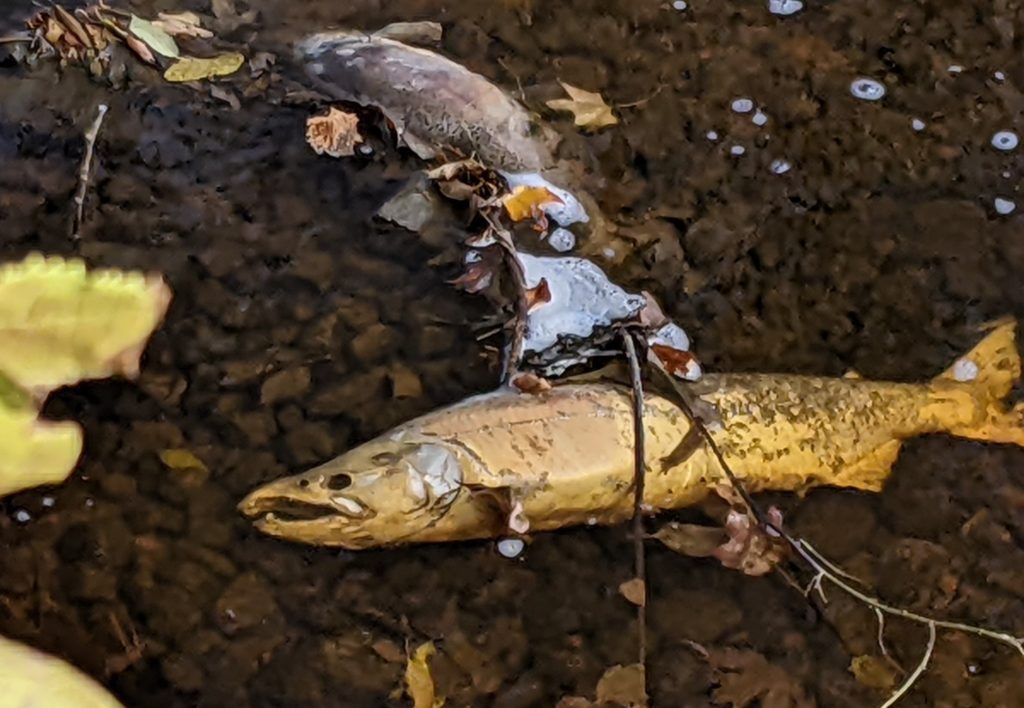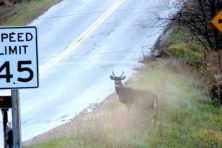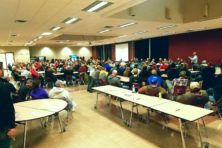Wild Things: Falling in Love with Leaves
- Share
- Tweet
- Pin
- Share

Remnants of autumn are coating the forest floor and lawns
by KEVIN NAZE, [email protected], Peninsula Pulse contributor
A glorious first day of November can’t camouflage the fact that this weekend marks the midway point of fall. The autumn equinox is already six weeks in the rear-view mirror, and early this Sunday, daylight saving time ends. (Yes! An extra hour of sleep!)
A sunny, calm and unseasonably mild start to the new month will likely have gone south by the time this goes to print, replaced by rain, wind and cooler air.
Most of the colorful leaves that were clinging to the trees have now dropped. And the ground is a good place for them because they provide shelter for overwintering caterpillars and other insects, which in turn provide food for early-arriving birds in the spring.
Decomposing leaves also suppress weeds, hold in moisture and return nutrients to the soil. For lawn use, mowing them into smaller pieces is best. For gardens, piling them works fine. And if you’re into composting, collecting leaves to cover layers of kitchen waste all winter is a good idea.
If you have young kids – or grandkids visiting – take them on a leaf hunt, and scrapbook their favorite finds. You won’t regret it.
The sights and sounds of the autumn woods can be incredibly soothing. Take some pictures of the last-gasp splashes of color that’ll be littering the forest floor or clinging to woodland shrubs, trees and plants. Before you know it, there’ll be snow.

Scatter Milkweed Now
If you want to help monarch butterflies, there’s no better plant to get started on your property than milkweed: It’s the only plant on which monarchs lay their eggs, and the only plant that monarch caterpillars eat. The flowers also produce pollen and nectar for monarchs and other pollinators.
Now’s the time to gather and scatter milkweed seeds because they’ll need to lie under a moist blanket of snow all winter before germinating. Alternatively, you can store them in a moistened paper towel in the refrigerator for spring seeding. Then you can start them indoors or direct-plant them after the danger of frost has passed.
If you scatter seeds in the wind this time of year, you’ll get some successes, but you can improve your odds significantly if you poke a small hole into moist ground (after a rain is a good time), drop a seed in, then cover it with the original soil. Plant as many as you can, or want to, in the available area.
Find out more about monarchs and milkweed at wiatri.net/Projects/Monarchs/habitat.cfm.
What to Do with Deer Killed by Cars
Vehicle-deer collisions will peak this month while the whitetail mating season is underway. Drivers who hit deer (or others who are interested in them) may legally salvage what they can from the carcass after they call 608.267.7691 to report the collision.
The phone line is staffed daily, 7 am – 10 pm, and after hours, leave a voice message with your first and last names (please spell them out), a call-back number with area code, the deer’s location (road name, township and county) and whether the deer is a buck, doe or fawn.
By leaving a voice message, you are authorized to take possession of the deer, but you must take the whole carcass, not just the head or other desired parts.
A DNR dispatcher will call you the next morning to obtain additional information. If you don’t receive a call by noon the following day, you’re asked to call again to verify that your voice mail was received.
Deer Hunt Wisconsin
The 32nd annual episode of Deer Hunt Wisconsin, hosted by Dan Small, will air on Wisconsin Public Television on Nov. 10, 8:30 pm, and repeat seven more times between Nov. 11 and 18. Check your local listings for the broadcast dates and times. If you’d rather take a peek online, visit youtube.com/deerhuntwisconsin.
This year’s show offers advice for creating deer habitat, covers several successful hunts, discusses regulations and gives a hunting forecast by region.
Meanwhile, WisconsinEye host Lisa Pugh recently interviewed DNR deer program specialist Jeff Pritzl about his thoughts on the 2022 hunt. You’ll need to register (it’s free) to view the show. Find it at wiseye.org.
Harvest Update
Wisconsin hunters have registered more antlerless deer than in recent years but slightly fewer bucks, according to data through late October. More than 55,000 whitetails – 26,886 bucks and 28,231 antlerless deer – had been taken through Halloween.
Locally, Door County hunters had registered 571 (250 bucks) and Kewaunee County 448 (200). Of those 1,019 Door-Kewaunee whitetails, 539 were taken with crossbows and 262 with archery equipment. The other 200-plus came during the youth firearm season.

Weekly Water Levels
At the end of October, Lake Michigan water levels were still five inches above the 100-year average but had dropped 13 inches during the past year, including four inches since late September.
Lake Michigan and Green Bay were about 35 inches above the record low, set in 1964, and three feet below the record October high in 2020. Water levels are expected to drop another two inches during the coming month.




